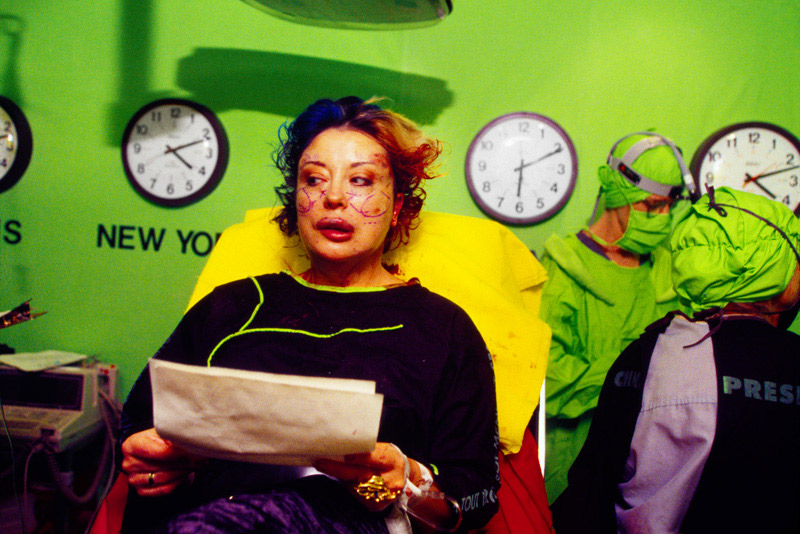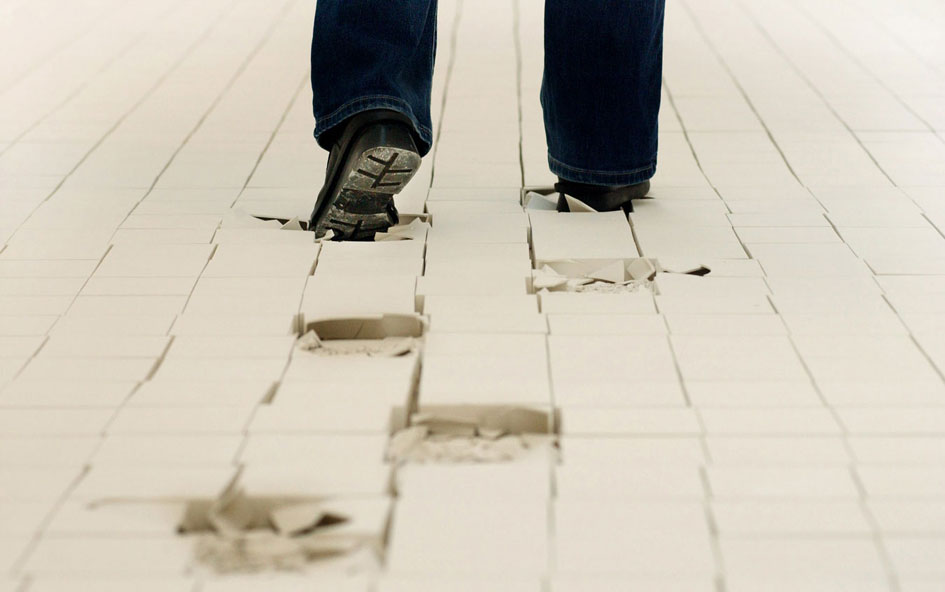Research
ORLAN
Born Mireille Suzanne Francette Porte, she's a French artist, who is most famous for disfiguring her body for art. I decided to research her because of this, as I have a curious nature for all things different. ORLAN, went under the knife for plastic surgery several times in 1990-1995, not to make herself more appealing, by editing herself for beauty or youth but to add disfigurements.
http://www.orlan.eu/
"No, my goal was to be different, strong; to sculpt my own body to reinvent the self. It's all about being different and creating a clash with society because of that. I tried to use surgery not to better myself or become a younger version of myself, but to work on the concept of image and surgery the other way around. I was the first artist to do it," - ORLAN.

Lucy is a member of the Medical Artists Association and accreditation of Medical illustration Practitioners, that draws diseases and deformed humans. I'm interested in her work because she draws imperfections and defects of the human body, although the drawings are very plain in colour they are filled with detail. I'm really fascinated by her specimen jar/case drawings, since it's something I'm curious about, as I want to produce peoples flaws into specimen jars this year.
http://www.lucylyons.org/
http://www.lucylyons.org/projects/4886474#5
Giuseppe Penone
Penone is a conceptual artist and sculptor, the piece I practically like of his is The Tree Will Continue to Grow Except at This Point. He placed an iron cast of his clutching a sapling in the Maritime Alps, so it would still grow but develop around the grip of the hand. I find this intriguing, as it is across between human and nature, I think he is trying to show how we effect our own earth and nature, like leaving our imprint on the world.
http://www.moma.org/collection/theme.php?theme_id=10454
http://www.aestheticamagazine.com/blog/richard-longgiuseppe-penone-haunch-of-venison-london/
http://www.orlan.eu/
"No, my goal was to be different, strong; to sculpt my own body to reinvent the self. It's all about being different and creating a clash with society because of that. I tried to use surgery not to better myself or become a younger version of myself, but to work on the concept of image and surgery the other way around. I was the first artist to do it," - ORLAN.
( Quote from http://www.theguardian.com/artanddesign/2009/jul/01/orlan-performance-artist-carnal-art, paragraph 7 )

Lucy Lyons
Lucy is a member of the Medical Artists Association and accreditation of Medical illustration Practitioners, that draws diseases and deformed humans. I'm interested in her work because she draws imperfections and defects of the human body, although the drawings are very plain in colour they are filled with detail. I'm really fascinated by her specimen jar/case drawings, since it's something I'm curious about, as I want to produce peoples flaws into specimen jars this year.
http://www.lucylyons.org/
http://www.lucylyons.org/projects/4886474#5
Giuseppe Penone
Penone is a conceptual artist and sculptor, the piece I practically like of his is The Tree Will Continue to Grow Except at This Point. He placed an iron cast of his clutching a sapling in the Maritime Alps, so it would still grow but develop around the grip of the hand. I find this intriguing, as it is across between human and nature, I think he is trying to show how we effect our own earth and nature, like leaving our imprint on the world.
http://www.moma.org/collection/theme.php?theme_id=10454
http://www.aestheticamagazine.com/blog/richard-longgiuseppe-penone-haunch-of-venison-london/
http://terrestra.it/wp-content/uploads/2013/09/mano_penone.jpg
Jason DeCaires Taylor
Jason graduated from the London institute of arts in 1998 with a BA Honours in sculpture and then went on to qualify as a diving instructor. Jason has over eighteen years of diving experience, he has also won awards for underwater photography. He created the first underwater sculpture park in 2006, which is situated off the coast of Grenada, in the west Indies. The underwater sculpture park is listed as one of the top twenty-five wonders of the world, by National Geographic. One of this other pieces of submerged work he has done is a collection of five hundred sculptures place off the coast of Cancun, Mexico,that artwork is titled MUSA (Museo Subacuatico de Arte).
http://www.underwatersculpture.com/about/biography/
The reason I like Jason's work is because he does human sculpture parks but underwater. They really do look amazing and transform as the water weathers the piece, while one bit decays, the ocean also brings it to life with bacteria and plant life. His work has really inspired me to experiment with my ideas of underwater experimentation in the past, I love how the pieces peer deformed, while they decompose with the sea life covering them, but still giving a silhouette of a person.
Mathilde is a French artist that is base in Paris, she is another sculptor that caught my eye as she uses wheat seeds in some of their human sculptures, I'm really liking 'Lives of grass', the natural looking sculptures made out of living plant life does intrigue me. The figures are suspended in mid air, as well as on the floor, so you can walk around and admire the pieces in their full glory. The grass pieces amaze me, as they start to grow and the grass gets older, it looks like it's going through the ages of a persons life, I think the artist was aiming for this with the artwork.
https://anti-utopias.com/artist/mathilde-roussel/
http://www.mathilderoussel.com/files/gimgs/23_mathilde_roussel_lifesofgrass_12.jpg
Juuke Schoorl
Juuke is a Dutch photographer, the project 'REK' 2014 (which means stretch in Dutch) is what I am more interested in, within her work. She manipulates the skin with normal household things like cello-tape, while stretching the models skin with such materials, she then takes picture of distortion. I love how a simple thing like cello-type can deform the body and make it into something different, it shows how the human body is durable and can be manipulated into different shapes. Although the model is youthful, Juuke has placed the tape in away that makes her back look weathered or old, kind of like she is wearing a waistcoat, which really differentiates the difference between the two skin types.
http://www.juuke.nl/photography/rek/
Jonathan Yeo
Jonathan Yeo is a British artist born in London, in the 70s and does portraits of famous people. Although that is not why I like his work, he does oil paintings of surgery, which I stumbled across looking for artists which play with plastic surgery. The work is amazing, the detail of the person and the artistic fade out makes the pieces look old, like diagrams from a old fashioned medical book.
http://jonathanyeo.com/about/biography/
https://anti-utopias.com/artist/mathilde-roussel/
Pieces information- Soil, wheat seeds, structured from recycled metal and fabric.
http://www.mathilderoussel.com/files/gimgs/23_mathilde_roussel_lifesofgrass_12.jpg
Juuke Schoorl
Juuke is a Dutch photographer, the project 'REK' 2014 (which means stretch in Dutch) is what I am more interested in, within her work. She manipulates the skin with normal household things like cello-tape, while stretching the models skin with such materials, she then takes picture of distortion. I love how a simple thing like cello-type can deform the body and make it into something different, it shows how the human body is durable and can be manipulated into different shapes. Although the model is youthful, Juuke has placed the tape in away that makes her back look weathered or old, kind of like she is wearing a waistcoat, which really differentiates the difference between the two skin types.
http://www.juuke.nl/photography/rek/
Jonathan Yeo
Jonathan Yeo is a British artist born in London, in the 70s and does portraits of famous people. Although that is not why I like his work, he does oil paintings of surgery, which I stumbled across looking for artists which play with plastic surgery. The work is amazing, the detail of the person and the artistic fade out makes the pieces look old, like diagrams from a old fashioned medical book.
http://jonathanyeo.com/about/biography/
Gillian Wearing - Signs that say what you want them to say and not Signs that say what someone else wants you to say (1992-3)
After getting the idea for projecting and sign holding of feeling words, then photographing it, I remembered that I had seen something similar from another artist, but for the life of me I couldn't remember their name. Eventually after help I found out the artist's name and that was Gillian Wearing. The photographs fit with what I want to achieve, even though the context of her work may not, as she works with members of the public. She went to a busy place in South London, asked people to write down what was on the persons mind and with permission photographed them holding their statement.


.jpeg)




















